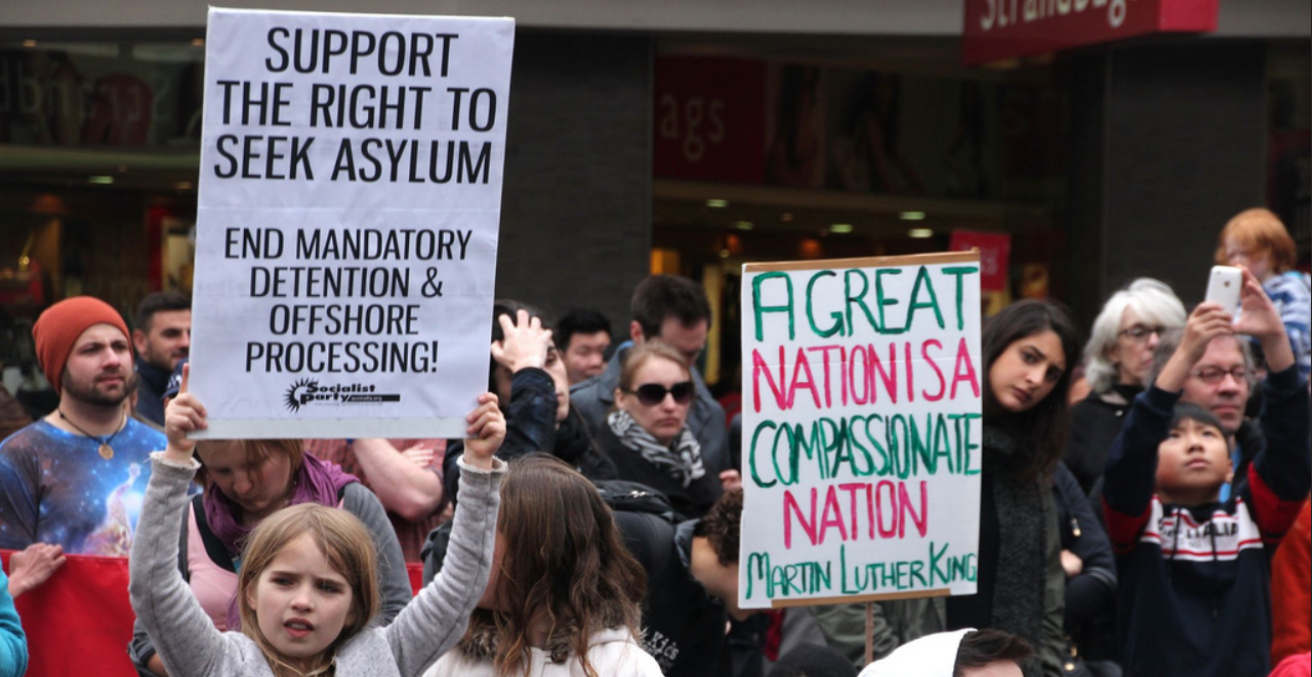How International Borders Shape Immigration Policy

The key difference between Australia and the United States in their treatment of asylum seekers is the available methods of entry.
On 6 April 2018, US Attorney General Jeff Sessions announced a “zero-tolerance” policy towards migrants entering the United States through its land border with Mexico. Directing the Department of Homeland Security and the Department of Justice to prosecute illegal entrants to the fullest extent reversed several more benign policies that granted some lenience towards first-time crossers and those with no criminal record. President Trump and Attorney General Sessions framed their new policy as a measure to deter human smuggling operations conducted by Mexican and Central American gangs.
In reality, the zero-tolerance policy primarily impacted asylum seekers escaping gang violence and political upheaval in Mexico and Central and South American countries. Many young families traveling together were detained by immigration officials and over 2300 children were forcefully separated from their parents. In Texas, three “tender age” shelters were established specifically to detain babies and toddlers. Following a massive international public outcry at the forced separation of so many families, President Trump was forced to rescind the policy and stated that, going forward, migrant families would be detained together.
This course of events provides an interesting lens through which to evaluate Australia’s own policy of offshore detainment of asylum seekers. The two nations share much in common: language, colonial heritage and an unfortunate preference for denying refugees entry.
There exists a line in the sand between nationalism and compassion that throughout history has manifested as immigration policy. National leaders position themselves on either side of this line, exerting a strong influence on their jurisdictions’ policy agenda and public opinion. While particular situations can stimulate an outpouring of compassion for refugees, for the most part it is nationalism, in the name of national security, that is the clear winner.
Of course, refusal to welcome refugees out of fear for upsetting a deep sense of nationalism is, at best, extremely unsavoury. But the hostile treatment of refugees is by no means a new phenomenon. Since 1992, the Australian government has pursued various policies aimed at detaining those attempting to enter the country without a valid visa. The mandatory detention policy was originally intended to curb the arrival of “boat people” from Southeast Asia whose attempts to reach Australia often ended with tragic results. Since then, the Australian government has used this concept of deterrence, as well as appeals to national security, to justify the often-inhumane treatment of refugees in its detention centres.
Australian public opposition to these policies and practices has been present since their inception, but its intensity has never reached that which was displayed by the American public, including First Lady Melania Trump, in recent months. While intense protesting may have prompted President Trump to rescind his original agenda and instead direct agencies to keep family units together and expedite the reunification of separated families, the alternative seems to put asylum seekers in America in a similar position to those awaiting entry to Australia. The language of President Trump’s new executive order indicates that families detained together can be held seemingly indefinitely.
The key difference between the treatment of asylum seekers in Australia and the United States relates to the available methods of entry. Because Australia is an island, its navy is able to dedicate considerable resources to patrolling northern waters and intercepting boats attempting to bring asylum seekers into Australia. Landing on Australian soil is critical to refugees because it automatically obliges Australia to protect these refugees in accordance with the terms of the 1951 Refugee Convention. Although critical in the aftermath of World War II, this has become problematic as resettling refugees has increasingly become institutionalised by the UNHCR and accepting countries. Arriving illegally means asylum seekers have circumvented the long process by which migrants are granted refugee status from abroad.
Since 2013, Australia has avoided its legal obligation to asylum seekers by detaining refugees on Manus Island in Papua New Guinea and Nauru. Over the past five years, Australia has gone to great lengths to prevent any of these offshore detainees from gaining access to Australia for any reason. While Australia can virtually guarantee that no asylum seekers enter its territory, the options available to the US are far more limited. The 1,954 mile (3,145 km) border with Mexico spans from the Pacific Ocean to the Gulf of Mexico, following the Rio Grande and passing through the vast Sonoran Desert. It is remote, treacherous and far easier (although no less dangerous) to establish routes that bypass commonly patrolled areas. Setting foot on American soil is far more achievable than landing on Australian shores. The tangibility of an international border is thus equally capable of inspiring the construction of a vast, impenetrable wall as it is for the public complacence enabled by keeping refugees in out-of-sight, out-of-mind detention centres.
Nancy Schneider is an American in Australia studying for her Master’s of International Relations at the ANU. Her research interests include disaster relief and global health.
This article is published under a Creative Commons Licence and may be republished with attribution.




